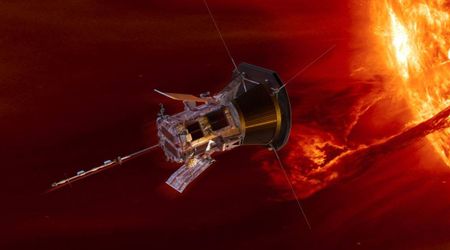How pigeon droppings on a telescope helped scientists confirm the Big Bang

The pillars of scientific discovery are rooted in the hours spent in a lab or at the end of telescopes. However, some of them could be hiding in plain sight or as it happened, in a pile of pigeon poop. According to Discover Magazine, the lingering effects of the Big Bang that proved the theory were discovered due to the interference of pigeons and their droppings. The echo of the Big Bang, called the Cosmic Microwave Background energy, was a matter of debate, which was solved by Nobel Prize-winning scientists after they mistook the constant static recorded.

The tale began in the 20th century when the scientific community was divided between two theories that would explain the origin of the universe. The Big Bang model held the upper hand over the Steady State Theory. The latter suggested that the universe was the same throughout at all times and only needed to be zoomed out. The former indicated that the entire universe came into existence from one point in space, and it kept expanding like a balloon that won’t pop. However, this theory lacked the evidence that would conclusively put this theory on the map.

This journey was a two-point story that joined in the middle. On one end, Princeton researchers Robert Dicke, Jim Peebles, and David Wilkinson hypothesized the existence of radio waves as an aftermath of the Big Bang. The theory banked on a burst of radiation that should persist, and the researchers attempted to observe and capture this constant signal. On the other end, two researchers named Arno Penzias and Robert Wilson were caught with the discovery of individual and easily spotted signals, radio waves that were put out by galaxies beyond our Milky Way.

The 50-foot-long Holmdel Horn Antenna was used for this purpose, but the task of separating radio chatter was gruesome. They had to peruse through the chatter of broadcast radio, military radar, and the constant roar of the sun to identify the faint extragalactic signals. Yet, there was an unknown noise pattern that remained, despite removing the unwanted signals. “We looked for anything in the instrument or in the environment that might be causing the excess antenna noise,” Robert Wilson commented, as per Smithsonian Magazine, as they kept looking for the cause.

Finally, they closed in on the pigeons who had nested within the radio tunnel and also littered it with their droppings. They captured them with a metal cage, still on display at the National Air and Space Museum. They removed the nest and cleaned the droppings, only for the sound to remain. This was heard by the Princeton researchers who arrived at the spot and confirmed the readings to be the Big Bang signal they were searching for. The success was commemorated in two studies, one that focused on the persistent noise and the other on the theoretical explanation.
Penzias and Wilson’s evidence of the signal confirmed the Big Bang Theory, and they were awarded the Nobel Prize a decade later. The horn antenna that recorded the first remnants of the Big Bang is now considered a historical landmark and stands on Holmdel Road. The radio receiver and its calibration system were sent to the Deutsches Museum of Munich, which was the birthplace of Arno Penzias. The researchers highlighted how sometimes, mistakes in science led to the discovery of something much bigger than expected, and this was the true spirit of science.









